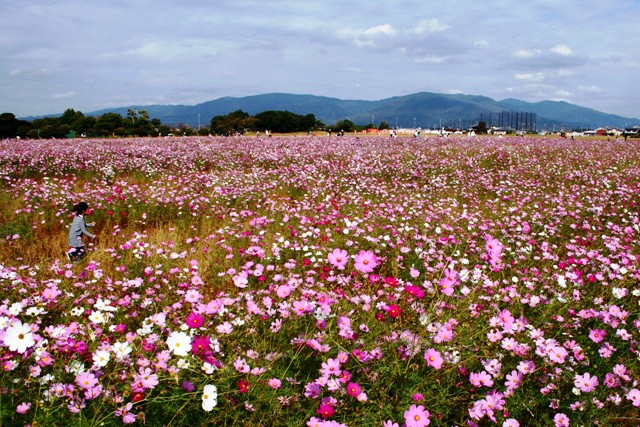After staying in Nara City, we moved to Kashihara City, about 30 kilometers south of Nara. Along with Nara, Kashihara is known as Japan's ancient capital named Fujiwara-kyo. The period of Fujiwara-kyo was from 694 to 710. It was after Asuka-kyo (592-694) and before Heijo-kyo namely Nara (710-784). Fujiwara-kyo was a 5 kilometers square grid-patterned city, which had an estimated population of 20,000. Today, the imperial palace ruins are only seen, but I could feel the existence of a vast ancient capital city there. The site of the former city center is now a vast cosmos field. It was filled with a carpet of cosmos flowers when we visited. They were magenta, pink and white-colored, and were shaking with the wind in the sunshine. We saw that many people were visiting to enjoy this autumn field.
To get to this ancient capital, the gateway station is Kashihara-jingu-mae on the Kintetsu-Kashihara line. Our vehicle was the EMU Kintetsu 1233 series. It's a standard commuter train composed of a motorcar and a trailer (1M1T). It was commissioned in 1989. 15 sets in total were built by Kinki-sharyo. The 1233 series belongs to the 1230 series group trains. Different from the original 1230 series, the 1233 series has a new type of bogies named KD-96B (M) and KD-96C (T) developed by Kinki-sharyo. These bogies have a shorter wheelbase to manage curve tracks. Technical specifications of the Kintetsu trains vary depending on the train, so, it's hard to understand even for trainspotters like me.

